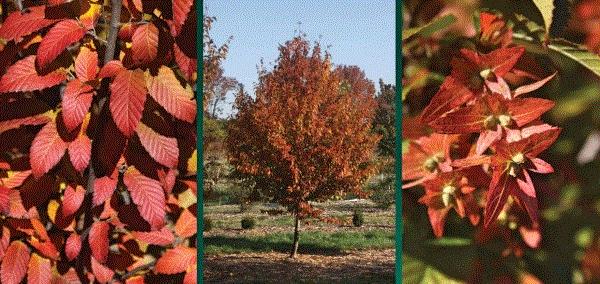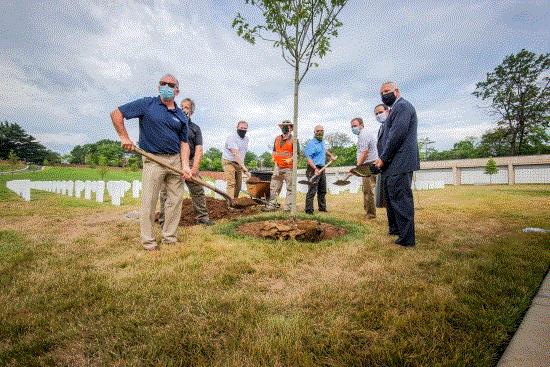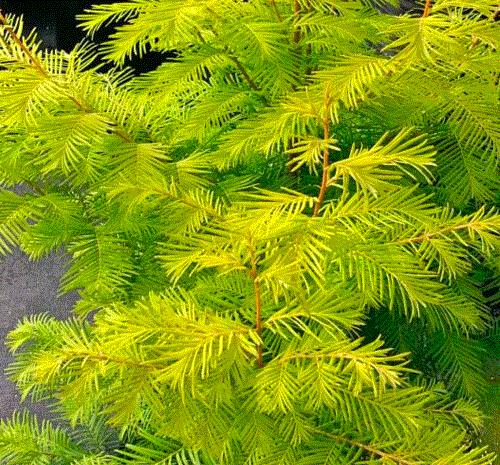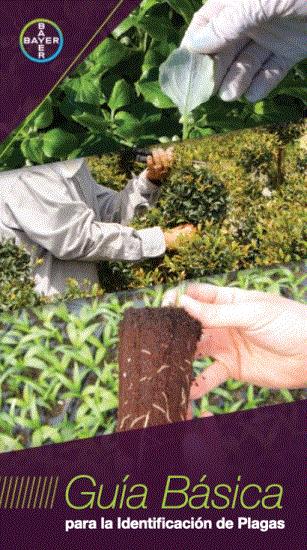GrowerTalks Launches Greenhouse Podcasts
There’s been so much news to report on recently that I haven’t mentioned a great new program being led by GrowerTalks.
Got time on your hands and want to slap in some earbuds? Then check out TECH ON DEMAND, brought to you by GrowerTalks. We’re proud to say it’s available on all the major podcast players: ApplePodcasts, Spotify, TuneIn, Podbean, Stitcher and more. Subscribe now and never miss an episode.
We have Senior Editor Bill Calkins to thank for producing these. He's the young chap behind the microphone of these interview-style podcasts, the goal of which is to help you grow your best crops ever by sharing cultural and technical information based on discussions with experts around the globe (although sometimes he’ll cover other topics in the horticulture realm, like nursery and retail, and trends and such).
The first four episodes are:
-
Holding & Delaying Greenhouse Crops with Jerry Gorschels (PanAmerican Seed), Gary Vollmer (Ball Floraplant/Selecta One) and Chris Fifo (Darwin Perennials/Kieft Seed)
-
Greenhouse Sanitation with Dr. Todd Cavins (Ball Seed Technical Services expert)
-
Poinsettia Disease Control with Aaron Palmateer (Senior Technical Rep with Bayer Ornamentals)
-
Poinsettia Insect Control with Aaron Palmateer (ditto)
Be sure to listen all the way to the end of these episodes to learn about a new resource available from Bayer—a user-friendly Spanish language pest identification guide that’s sure to be a critical tool for all greenhouse operations (more on that below).
More episodes will come as relevant topics arise, so subscribe today and add this digital tool to your greenhouse toolbox. Listen to TECH ON DEMAND as you work, drive, exercise, water, spray or whenever you need a horticultural pick-me-up.
Look for TECH ON DEMAND, brought to you by GrowerTalks, on your favorite podcast app or find all the episodes at growertalks.com/TechOnDemand.

Fire King American Hornbeam
If you’re a bark lover, you’d be hard pressed not to fall in love with Carpinus caroliniana (American Hornbeam). Native to the eastern U.S. (Ontario south to Texas and east to the Atlantic), its native niche is generally northern to eastern slopes with organic soils that have consistent soil moisture (but not standing water). It also generally has a nice globular shape, reaching 30- to 35-ft. tall and wide.

Enter a relatively new cultivar, Fire King. Selected by Mike Yanney and introduced by Johnson's Nursery, this selection has a trifecta of big positives.
First, it’s noticeably faster growing than the species and many other selections. Second, fall color (see photo above) is a consistent red to maroon, which is unique for the species and very desirable. Finally, it’s got excellent cold hardiness (Zones 3 to 8). So, while it may be a little tough to get this year, you may want to keep this cultivar on the radar for your future needs.
Ball Seed Customer Days
This year's Ball Seed Customer Days is occurring over a wider date range to accommodate more visitors while ensureing adequate social distance.
Don't miss your chance to tour the West Chicago trial gardens and see the newest introductions. Open dates are Tuesdays through Fridays, July 28 - August 14. Tours will be self-guided using exploratory signage. Discovery codes throughout the grounds access a broader digital experience with video, product details and other downloadable information right on your web-enabled mobile devices.

Guests of Ball Seed will be asked to wear face coverings at the registration tent and observe social distancing while in The Gardens. A boxed lunch and light literature will be provided. Due to COVID-19 and ongoing campus construction, no additional tours of the Ball facility will be available. A map will share directional guidance for timely touring.
For questions, contact fieldtrial@ballhort.com or call (800) 879-BALL.
Armitage Releases Perennial Book Update
Horticulture icon Dr. Allan Armitage’s newest edition of his perennial plant masterpiece launched last week. The fourth edition of "Herbaceous Perennial Plants: A Treatise on Their Identification, Culture, and Garden Attributes" hit the shelves in both hardback and paperback editions.

Published by Stipes Publishing, the newest edition of "Herbaceous Perennial Plants" includes dozens of new species and hundreds of new cultivars from breeders throughout the world. While Armitage’s comments on morphological characteristics provide sound scientific guidance for gardeners and horticultural fans, his testaments to plants’ “garden worthiness” add a unique, solid perspective for readers deciding which plants will perform best in their spaces.
In this fourth edition, Armitage amplifies and simplifies the many recent changes in plant nomenclature, as well as shares up-to-date analysis of the problems with invasive plants. While providing an in-depth reference book, his subtle humor concerning plants and cultivars may bring laughter to the reader. He describes the differences in gardening in the south vs. the north, plus he shares his expertise in selection, identification and propagation of perennials for the expert and the beginner.

NALP Holds 2020 Renewal & Remembrance Ceremony
I’ve always been a big fan of the National Association of Landscape Professionals (NALP), as they really do some amazing charitable work, as well as fostering student development. And while Arlington National Cemetery is currently closed to the public, that wasn’t going to stop the NALP Renewal and Remembrance Committee from wanting to keep the tradition of honor and service alive on what would have been the 24th anniversary of the annual event.
This year, with support from NALP partners at Caterpillar, Exmark/Z Turf Equipment, Gravely, John Deere, New Holland, SiteOne and STIHL, they held and videotaped a small ceremony in Section 81 (the newest area of the cemetery) and added needed shade to the area by planting a Red Oak tree donated by Country Spring Wholesale Nursery.

NALP President Andrew Ziehler and ANC Superintendent Ray Alexander addressed the group, and you can watch the video here.
Amberglow Dawn Redwood
For those who've grown dawn redwood, you probably remember it as a big ol' tree that's tough as nails in the landscapes across Zones 5 to 9. Big, green foliage forms can get as big as 70- to 100-ft. tall and 40- to 50-ft. in diameter. If it had one hiccup it was a need to be planted in sites with consistent soil moisture, yet it’s also a species that can take extremely wet soils in rain gardens and bogs.
A breakthrough for the industry was when the cultivar Ogon, which was the first widely available (commercially) cultivar with a different foliage color. Ogon threw in really nice chartreuse color and reduced mature plant size (40 to 50 ft. in height), although in Zones 8 to 9 in particular, foliage does bleach out in late summer.

Pictured here is Amberglow, with amazing foliage color. Fun fact: Amberglow, as per the trademark, is in fact one word and not two!
Now we have a new(ish) cultivar that’s becoming more readily available—Amberglow. While a seedling of Ogon, Amberglow is noticeably smaller at about 30 ft. x 15 ft. It also seems to have an orangish tinge when foliage has just emerged, which fades to a bright yellow and foliage holds up better in hotter environments. Just make sure to site it in a moist spot or it will also bleach (a sign of water and heat stress).

Bayer Introduces New Spanish Pest Identification Guide

As part of its commitment to diversity and inclusion, the Environmental Science business of Bayer, part of the company’s Crop Science division, has created a new Spanish Pest Identification Guide to effectively communicate important technical information about pests to Spanish-speaking laborers in greenhouse and nursery operations. Digital versions of the guide—in both Spanish and English—can be viewed, printed or downloaded for free on the Bayer website. Spiral-bound printed copies are also available for a nominal fee and can be ordered from the site as well.
“Greenhouses and nurseries are often employee workers who speak Spanish as a first language. As laborers are an important part of the success of production ornamentals operations, effective communication between growers and laborers is necessary to ensure the healthiest plants,” said John Wendorf, customer marketing manager for Bayer Ornamentals. “Our new Spanish Pest Identification Guide serves to bridge communication gaps between growers and laborers, helping to ensure everyone knows how to identify pests, as well as how to use Bayer products to address those pests properly and safely.”
This user-friendly guide is easy to follow and includes many pictures to help Spanish speakers not only identify pests, but also how to control these pests, including information on what types of personal protective equipment (PPE) should be worn while making pesticide applications.
Well done, Bayer!

Our Wacky Wonderful World—Notes from the Edge of Sanity
As this pandemic has continued, I've tried to pay attention to how it's changed professional behavior. After all, when we go from working (mostly) as part of a team to either completely independently or in much smaller teams, it’s bound to change work behavior, and as a result, productivity.
Oddly enough, anecdotally speaking with friends in the industry and academia, the vast number of salaried workers (and a lot of hourly employees, too, due to the killer spring) appear to be working MORE. In a way, it makes sense, as when our commute (for salaried workers) has been measured in steps as opposed to miles that means more time for work. Same goes for lunch (and happy hour). There's a question as to if this can persist, especially when schools reopen (many of which are going online).
I will admit that I'm guilty of working more (as I sit and write this on a Saturday). In fact, since the second week of March, I've been working 11.4% longer per week than before the pandemic. I know this because I track all time and tasks using a neat app called Toggl, which Dr. Cheryl Boyer at Kansas State University introduced me to.
So, all of this leads to the point—if you've been working a little more than normal since the pandemic started, realize that in many cases this isn’t sustainable, especially if you have kids and/or a significant other. Make sure you slow down a bit to smell the roses!

Live authentic,

Matthew Chappell
Editor-at-Large
Nursery & Landscape Insider
This has been received by 27,824 of the hardest-working horticulturists in show business!
If you're interested in reaching 27,824 (and growing) clients who eagerly await every Nursery & Landscape Insider and surely read every word, contact Kim Brown ASAP and she'll hook you up.